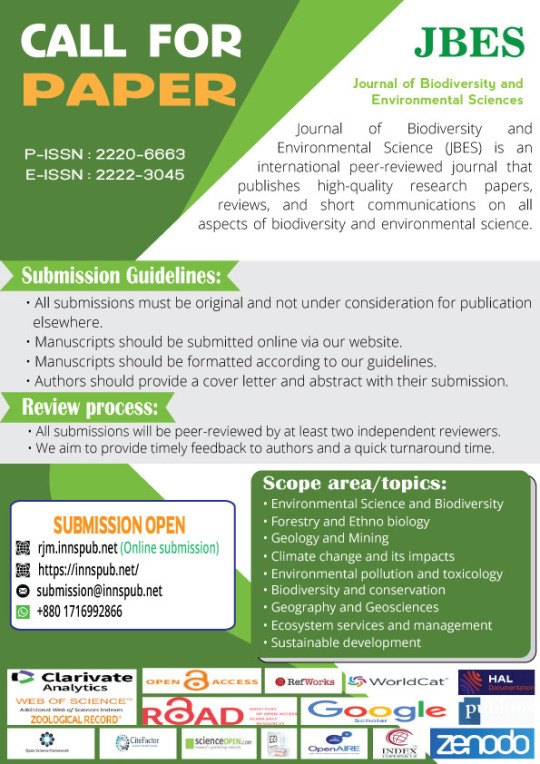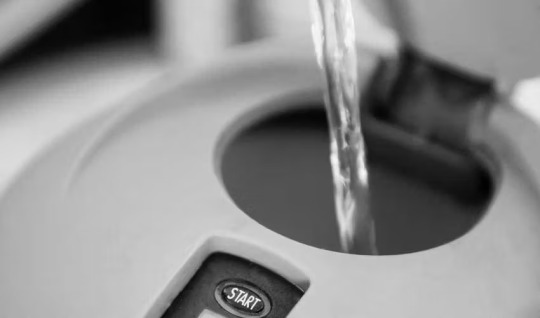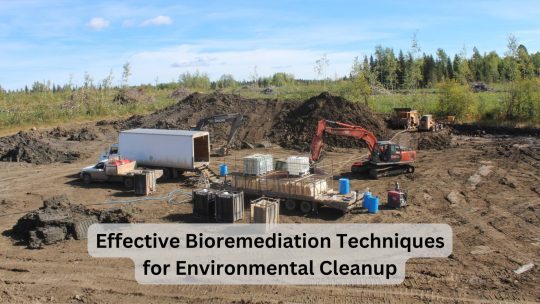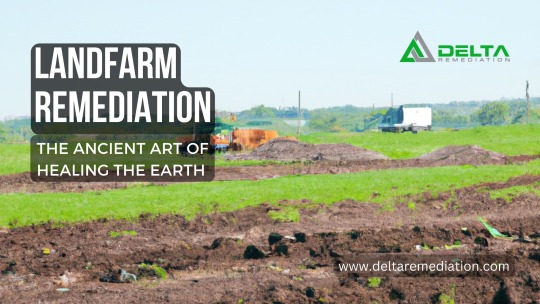#Heavy metal contamination
Text
cant remember which one of my friends asked me about whether or not i have contamination issues due to my ocd and i really looked them in the face and said "nah not really" forgetting i fully had a meltdown about aluminum foil like 4 months ago
#i forget because my contamination stuff is different from all of my ocd friends contamination stuff!!#and then i spend two hours working myself into a frenzy about synthetic food colorings and suddenly think 'by god its the Disorder'#i will eat food thats fallen on the floor in my own home but i will also end up in tears about heavy metals in store bought dried herbs#ocd
4 notes
·
View notes
Text
I try not to use tap water if at all possible, even though I moved to Portland, OR where they supposedly don’t put fluoride in the water.
1 note
·
View note
Text
Scientists just announced they have created a membrane made from a waste by-product of vegetable oil manufacturing, which can filter out heavy metals from contaminated water.
They discovered that proteins derived from the by-products of peanut or sunflower oil production can attract heavy metal ions very effectively.
The study showed that this process of attraction, called adsorption, was able to purify contaminated water so it meets international drinking standards.
#good news#good news network#water purifier#water purification#heavy metal#contaminated water#oh brave new world
7 notes
·
View notes
Video
youtube
VALKYRJA-CATHARSIS (CONTAMINATE THE EARTH)
2 notes
·
View notes
Text
the ideal cannibalism victim is an upper class vegan with no familial history of seizures, and you should avoid consuming the nervous system when eating them. prion diseases are not as common as one think and the specific instance of human and cattle brain degeneration that most know about were due to subsequent and generational consumption of nervous system meat within the same group of organisms. your chances of getting a prion disease from someone with the above demographic are drastically low.
#korro.txt#i say ''vegan'' for several reasons. the first being that you can get prion diseases from eating contaminated meat of Any species#see: mad cow disease and wasting deer. so you don't want to eat the meat of someone who eats meat if you can avoid it#also! carnivore meat has a high aclimation of heavy metals from eating other creature's flesh. this is why it tastes bad#and can sometimes be toxic#so in terms of both safety and flavor a vegan would be best.
3 notes
·
View notes
Text
I have suddenly realized that moving into town means I'll have to switch from well water to city water, and I'm not sure I like that. At least I've got a few years to come to terms with it while I save up.
#nothing beats well water#city water always tastes funky#even if its cleaner than where i grew up#city of shawnee water my beloathed#i do not miss the farmland runoff#or the heavy metal contamination
0 notes
Text
Common properties that are must haves in the turbine oil

Oxidation Stability: Oxidation stability is a chemical reaction that occurs with a combination of the lubricant and oxygen. The rate of oxidation is accelerated by high temperatures, water, acids, and catalysts such as copper. The service life of a lubricant reduces with an increase in temperature.
Viscosity Index: The viscosity index (VI) is an arbitrary, unit-less measure of a fluids change in viscosity relative to temperature change. It is mostly used to characterise the viscosity-temperature behaviour of lubricating oils. The higher the VI, the more stable the viscosity remains over temperature fluctuations.
Filterability: Capable of being filtered or separated by filtering.
Low Sludging Formation Tendency: Having low sludge formation tendency.
To know more about sludging, read: https://www.linkedin.com/pulse/what-varnish-its-effects-anshuman-agrawal
We at Minimac study your maintenance needs and provide the best solution. We believe in Discern, Design & Deliver.
Call +91 7030901266 for Mechanical Maintenance & Oil Check.
#frf#oil flushing#minimac systems#power#minimac#oil & gas#hydraulic oil#lube oil filter#contamination#hydraulic oil filter#chemical cleaning#frf condition systems#oil condition monitoring#electrostatics lube cleaner#oil dehyration#coalescer separator#transformation oil purification#diesel oil purification#oil analysis#oil filters#oil and gas#oil industry#oil#turbine oilanalysis maintenance lubrication reliability contaminationcontrol oil powerplants oilfiltration rotatingequipment mechanical bre#power generation#metal#heavy metal#black metal#mining
0 notes
Text
Heavy Metal Levels in Abandoned Mining Soil: Zamboanga City

Abstract
The study aimed to determine the extent of heavy metal contamination of Copper (Cu) and Lead (Pb) in the soil from the abandoned mining area in Zamboanga City, Philippines using the 2017 EMB Site Characterization Guidelines. Soil samples were randomly collected from 3 meridional blocks at 2 different soil depths, 0-5cm and 20-25cm. Pb and Cu concentrations, organic matter (OM) percentages, pH and Electrical Conductivity (EC) were analyzed using appropriate equipment across sampling sites. The study revealed that heavy metal content in Block 3 exceeded the maximum allowable concentrations based on WHO standard with an average mean of 3,351.00mgkg-1 Pb and 498.67mgkg-1 Cu at 20-25cm soil depth. Moreover, at 0-5cm soil depth, Block 3 had 4176.33mgkg-1 Pb and 494.67mgkg-1 Cu. Furthermore, soil pH was strongly acidic across all blocks with values of pH 5.0 at Block 1; pH 4.7 at Block 2 and pH 4.1 at Block 3. For EC and OM percentages, results ranged from 183.33 μS/cm to 286.67 μS/cm and 1.81% to 4.05%, respectively. Using Analysis of Variance at P < 0.05, this study further revealed that there is a significant difference of Pb and Cu concentrations in 3 meridional blocks at 0.001. This indicates that heavy metal concentrations present in the soil varies in the 3 blocks. However, in physico-chemical parameters, only organic matter has significant difference in all blocks at P ≤0.01. Based from the findings, it is recommended that counter measures be undertaken to minimize further retrogressive impacts of mine tailings left in the area specifically in Block 3.

Introduction
Abandoned mining sites are significant sources of metal pollution even after centuries due to presence of contaminants in the soil. Toxic metals that remain in the soil and tailing ponds have the potential to travel and contaminate environmental habitats such as soil, water, groundwater, and air. It has the potential to alter soil texture, deplete nutrients, penetrate the food chain, create harmful consequences, and destroy ecological habitat and biological variety, including plants (Conesa et al., 2006; Baker et al., 2010; Rashed, 2010).
Soil pollution by heavy metals is a global environmental issue. Heavy metal contaminants represent a health risk to humans through food chain transfer from soils to crops, prompting increased scientific and public awareness of the issue (Alloway 1995; Oliver 1997; Chen and Lee, 1995; Chen et al., 2000) particularly in the areas close to industrial sites and in the vicinity of mining and smelting plants (Pushenreiter et al., 2005). Heavy metal pollution of soils can also be caused by the parent material's high heavy metal content (Huang, 1962; Reeves, 2003). People living in the area may not be aware of the soil pollution, according to Navarrete and Asio (2011), who cautioned that the risk posed by polluted soils is caused by a lack of awareness of people living in the area, who may not be aware of the presence of these pollutants and their health effects.
This study evaluated the concentrations of heavy metals in soil from abandoned mining area in Barangay Baluno, Zamboanga City. Soils in the surrounding mining areas are probably polluted by heavy metals which could possibly pose high health risks to the adjacent community (Li, 2014). The study area has been abandoned for a decade and this study would like to assess the possible contamination of heavy metals in the soil in the present. It was hypothesized that the soils from the abandoned mining area are highly concentrated with heavy metals. The main goal of this study was to determine the concentration of copper and lead in the soils from the abandoned mining area.
Source : Heavy metal concentrations in soil from abandoned mining area in Barangay Baluno, Zamboanga City, Philippines
0 notes
Text
Why You Need A Water Filter Pitcher: 12 Benefits You Can't Ignore

Water is essential for life, and drinking water is crucial for maintaining good health. Unfortunately, tap water may contain impurities that can harm human health, including bacteria, viruses, chemicals, and heavy metals.
A water filter pitcher is an affordable and convenient way to purify tap water. This article will discuss the 12 benefits of using a water filter pitcher.

1. Removes Contaminants
A water filter pitcher can remove contaminants such as chlorine, lead, mercury, and copper, which can harm human health. These impurities can cause health problems such as digestive issues, respiratory problems, and skin irritation.
2. Improves Taste and Odour
By removing unpleasant odours and flavours caused by chlorine, sulphur, and other impurities, tap water can be improved using a water filter pitcher.
3. Saves Money
Using a water filter pitcher can save you money in the long run. Instead of buying bottled water, you can filter tap water, which is more cost-effective and environmentally friendly.

4. Reduces Plastic Waste
By using a water filter pitcher, you can reduce the amount of plastic waste produced by bottled water. According to National Geographic, only 9% of plastic waste is recycled, and the rest is in landfills or the ocean.
5. Easy to Use
You can easily use the water filter pitcher by filling it with tap water, which will then remove impurities as the water passes through the filter.
6. Convenient
Keeping the water filter pitcher in your refrigerator ensures it's always convenient and ready to provide clean and refreshing water.

7. Portable
A water filter pitcher is portable, so you can take it wherever you go. Whether you're going on a camping trip or visiting a friend's house, you can bring your water filter pitcher and have access to clean water wherever you are.
8. Easy to Maintain
Maintaining a water filter pitcher is easy. Depending on usage, you only need to replace the filter cartridge every few months.
9. Healthier Alternative to Bottled Water
Using a water filter pitcher is a healthier alternative to bottled water. Bottled water may contain impurities, and there is also the risk of plastic leaching into the water.

10. Environmentally Friendly
When you use a water filter pitcher, you are being kind to the environment. This is because it helps decrease the quantity of plastic waste produced by bottled water. Additionally, it reduces the negative impact on the environment caused by the production and transportation of bottled water.
11. Provides Peace of Mind
Using a water filter pitcher provides peace of mind. You can be confident that you're drinking clean and safe water, free from harmful contaminants.
12. Improves Overall Health
Drinking clean and safe water is essential for maintaining good health. Using a water filter pitcher can improve your overall health by providing clean and refreshing water.

Conclusion
Using a water filter pitcher is a cost-effective and easy way to clean tap water. It offers several advantages, such as eliminating harmful substances, enhancing flavour and scent, cutting costs, decreasing plastic pollution, and promoting good health. Using a water filter pitcher gives you peace of mind knowing that you're drinking clean and safe water.
Upgrade your drinking water with Ecobud's alkaline water filter today! Say goodbye to impurities and hello to fresh, clean, and healthy alkaline water. With Ecobud's advanced filtration technology, you can enjoy the benefits of alkaline water in the comfort of your home. Try it now and experience the difference!
READ MORE >>
#tap water#water filter pitcher#water filter jug#improve taste#save money#removes contaminants#plastic waste#easy to use#convinient#portable#good health#eco-friendly#lifestyle#filtered water#wellness#finest#quality water#drinking water#heavy metals#sustainability#water#drink water#healthy lifestyle#healthy living#water filter#living#drink#alkaline water#must have
0 notes
Text
While topsoil does act as a filter, trapping a lot of heavy metals and contaminants, many of these contaminants do end up downstream.
"Soil: The incredible story of what keeps the earth, and us, healthy" - Matthew Evans
#book quote#soil#matthew evans#nonfiction#topsoil#filter#heavy metals#contamination#contaminants#downstream#waterways
0 notes
Text
5 animal species that became radioactive after being exposed to nuclear fallout zones
5 animal species that became radioactive after being exposed to nuclear fallout zones
View On WordPress
#Animals#chernobyl#contamination#Fukushima#heavy metal poisons#long term effects of radiation#nuclear plants#nuclear testing#radiation#radioactive
0 notes
Text

Effective Bioremediation Techniques: A Sustainable Solution for Environmental Cleanup
Bioremediation is a sustainable and cost-effective solution to environmental pollution, using living organisms such as bacteria and fungi to degrade pollutants into harmless compounds. There are various bioremediation techniques, including in situ (at the site of pollution) and ex situ (removing contaminants to treat elsewhere). Other methods include bioventing, biosparging, and use of bioreactors to promote the natural degradation of pollutants.
These techniques can handle a wide array of pollution types including petroleum, heavy metal, pesticide contamination, industrial waste, and landfill leachate. Benefits of bioremediation include its sustainability, cost-effectiveness, versatility, and non-invasiveness.
One company leading the way in bioremediation is Delta Remediation, based in Alberta, Canada. They specialize in applying these techniques to sites polluted with hydrocarbons, pesticides, and industrial waste, and have expanded their operations to Nigeria and Kenya.
Bioremediation thus offers a promising method for environmental cleanup, being both eco-friendly and adaptable to diverse environments. Companies like Delta Remediation are pioneering in this sector, making significant contributions to environmental health.
#Bioremediation techniques#Environmental cleanup#Sustainable solutions#Microorganisms in bioremediation#In situ bioremediation#Ex situ bioremediation#Bioventing for soil remediation#Biosparging for groundwater cleanup#Bioreactors in environmental remediation#Petroleum contamination cleanup#Heavy metal pollution remediation#Pesticide degradation#Industrial waste treatment#Landfill leachate remediation#Benefits of bioremediation#Delta Remediation#Bioremediation company#Alberta bioremediation services#Oil and gas industry cleanup#Hydrocarbon and pesticide decontamination
0 notes
Text

Landfarm Remediation: The Ancient Art of Healing the Earth
Landfarm remediation is a practice that involves using natural systems and microorganisms to break down and transform harmful substances in contaminated soil and water. This approach seeks to restore the balance of natural systems and promote healing and growth in the environment, while also creating a more sustainable future for human society.
Landfarm remediation is based on the principles of sustainable agriculture and draws upon the ancient art of working with the earth to promote healing and growth. It recognizes the interconnectedness of the health of the land and the health of all living beings, and seeks to work with nature, rather than against it.
To remediate contaminated soil, specific strains of microorganisms are introduced to break down the contaminants and transform them into harmless compounds. This process typically involves soil testing and analysis, tilling and aerating the soil, and adding organic materials such as compost and manure to provide food and energy for the microorganisms.
Landfarm remediation is a complex process that requires careful planning and management, as well as an understanding of the natural systems and microorganisms involved. However, the rewards are significant, including the restoration of the health of contaminated land and the creation of new opportunities for sustainable agriculture and land use.
Ultimately, landfarm remediation is a powerful tool for healing the earth and creating a more sustainable future by combining ancient wisdom with modern scientific knowledge and techniques. It can help us create a world that is healthier, more resilient, and more connected to the natural systems that sustain us.
#Landfarm remediation#Sustainable agriculture#Environmental remediation#Soil health#Microorganisms#Pollution#Contamination#Biodiversity#Organic materials#Ecosystems#Sustainability#Natural systems#Heavy metals#Petroleum#Site selection#Compost#Manure#Nutrient cycling
0 notes
Text
I know it’s a funny statement and that’s why it became a meme but when you hear “isopods remove heavy metals from soil” it’s not like they’re mining it and putting the contaminants in piles. it goes into their bodies and makes them very sick, and can lead to toxic metal buildup in animals that eat them
909 notes
·
View notes
Text
youtube
SLIMELORD-PUDDLE DWELLER
#SLIMELORD#DEATH DOOM METAL#DEATH DOOM#DEATH METAL;#DEATH#DOOM METAL;#DOOM#HEAVY METAL;#METAL#MOSS CONTAMINATION#2021 EP#Youtube
0 notes
Note
have yall ever gotten lead poisoning from all that
Nope. Large Bastard had to get a ton of blood tests, including a heavy metals test, before the transplant and there was nothing elevated - we asked about it specifically and everything was normal; I have lower lead exposure than he does so we haven't done a blood test for me.
The thing is that big chunks of lead is a much lower exposure risk than working with particulate lead, so it's a lot scarier to deal with stuff like lead paint than it is a pot with a gallon of hot liquid lead in it. The people who clean up the bullet blocking material at indoor shooting ranges are dealing with much nastier stuff than people who are loading bullets.
It's a good idea to wear gloves and minimize skin contact when you're working with any lead, and to wear respirators in certain conditions. You certainly shouldn't handle lead if you're not familiar with how to do so safely, and you should definitely be concerned about recalls associated with lead paint or lead contamination in makeup or food products.
A big chunk of lead sitting in your hand for a minute or two once in a while is unlikely to be a problem; lead powder in makeup that you put on your skin or in paint on plates or toys is a big, big problem.
255 notes
·
View notes